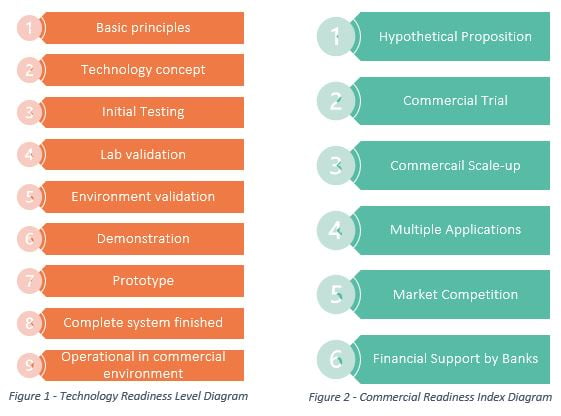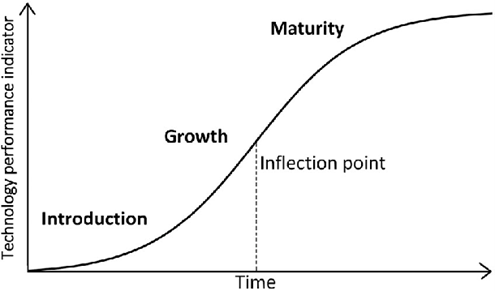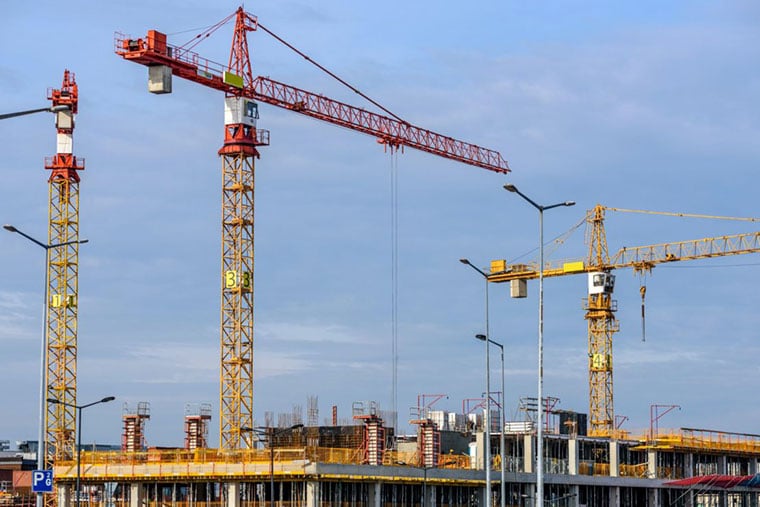
Choosing green technology winners
March 2022
By Tim Hartley - Consultant at 42T

In any plan to meet net zero by 2050 there is a significant reliance on some form of technology advancement.
This could either be performance based, such as efficiency improvements, or cost based, making sustainable alternatives competitive with their counterparts. Some models and forecasts even rely on completely new technologies entering the market to supplant processes which current available options are struggling to replace sustainably.
This reliance on technology that is not yet in existence, or is still under development, means that to prepare for a transition to green technology requires companies to make a prediction about which route to net zero would be the best to take. This also applies to when to invest in the equipment and infrastructure required for this. A late entry into the market risks not achieving sustainable targets, heavy penalties for not meeting required emission levels and lagging competitors.
This therefore means that a gradual and slow change, observing previous market trends, is no longer an option. However, a significant amount of investigation should be performed before a route is chosen. Key equipment may need to be replaced to keep up with competitors if the efficiencies or performance continue to rapidly improve over time, or the capacity of the technology is not correctly matched to the desired growth of the company and the technology chosen is no longer suitable if the correct route is not chosen.
There are multiple areas where these technologies could be applied by companies producing their own products. These might include powering the production lines, the process equipment and methods or the material choices for the products themselves.
Prior to investigating a new technology, several questions should be asked of a company's long-term plans and requirements for the incumbent technology:
What sort of change is necessary?
One of the first questions to be asked is what scale of change is required as a minimum. This may result in an answer that could be achieved through smaller changes in efficiencies rather than a more fundamental change in the current process or product. Achieving a good understanding of where the biggest sources of waste or largest emission generating parts or processes are, can help to reduce these without overhauling the entire system. This could also lead to a staggered approach to change where a company may still be able to keep ahead of targets by improving smaller aspects of a process or a product before making more substantial changes when it is more beneficial to do so.
What are the existing assets or product aspects that need to be kept?
Another important question to address, especially when looking at process improvement is what parts of the process need to be kept. This can be particularly apparent in material choices for products and packaging. The choice of material can have a large impact on performance or user experience and so it is important to consider which parts could be changed without affecting the product.
What are the minimum requirements of the new system?
Similar to asking ‘what is the minimum improvement in waste or emissions?’, deciding what properties the new technology or process needs to have is very important, making sure that the same quality is maintained or even improved in key areas.
What is the business case?
Examining some of the commercial considerations are also important, such as how much longer is the product or manufacturing process intended to be kept in production for? This may affect the amount that is budgeted for the transition, or accelerate the redundancy of a product or production line if the cost to improve is higher than the perceived value to continue.
Another key piece of information that is required from examining the business considerations is the budget for switching to a green technology. This may depend on where the business intends to expand, which markets and if the technology needs to have the extra capacity for expansion.

With these questions examined, the technologies themselves can be reviewed for suitability.
What factors then need to be known about the technology to make key decisions?
Technology readiness level or commercial readiness index

One of the first key pieces of information that is required is an estimate of the technology readiness level (TRL) and commercial readiness index (CRI) of the route under investigation.
The results of this are a scale, usually from 1-9 for TRL or 1-6 for CRI, from early research to mature, commercially viable technology. This helps establish the development effort required to get this technology to a stage mature enough to be implemented into a commercial line.
With the more widespread increase of data collection and availability it is now possible to predict future improvements to happen to a technology based on data from that technology and historical data gathered from similar technologies. Technologies often exhibit what is known as an ‘s-curve’.
When performance vs investment is plotted on a graph, four distinct stages emerge: infancy, rapid growth, maturity, and decline. For technologies which have not yet gone through all these stages, the potential improvements can be predicted by fitting a curve to the data of the progress up until that point. This can give an idea for the amount of development required to reach a certain level of performance or the likely maximum performance of a technology. This can be a useful tool in planning for future investments and comparing technologies with future targets in mind.
 Figure 3 - A standard technology performance vs time or investment curve
Figure 3 - A standard technology performance vs time or investment curve
Availability
Often an investigation into the TRL can lead to an insight into market leaders of a technology and the availability of key components, as well as areas of research that are ongoing. A useful indicator for future directions of a technology.
Infrastructure
Also, the likely surrounding infrastructure plays a large part in the feasibility of a technology for a given scenario. For example, if a company wishes to run a fleet of trucks using hydrogen, the fuel containment units on the trucks may be the technology required to facilitate the transition. But there also needs to be an economically competitive and abundant source of hydrogen available to make it viable. For similar reasons, technology that requires certain raw materials or key components needs to have the supply chains examined.

Skill level required to operate the technology
With the introduction of new technologies, there will inevitably be some training and time required for operational staff to acclimatise to new methods and processes. The similarity between the old system and new will determine the amount of time operators will need to adjust. In addition, if the new technology has an increased level of complexity, new operators who are previously experienced with the technology may need to be hired, increasing the overall cost.

This research and analysis into a technology provides an insight into its overall suitability for a company based on the initial questions asked. This could result in adaptation to a current process or product, or a complete overhaul depending on what the company needs and which technology is ready. It could also result in the decision to wait until a technology has had the chance to mature enough to become viable for a particular application.
With an investigation into the needs of a company (both present and future) and a solid understanding of the status of a technology – including performance and current developments in the industry – an informed decision can be made about whether to invest in a new technology. The steps outlined above will reduce the risk of adoption of the wrong technology and subsequent early redundancy.
S-curve graphic: Maria Priestley, T. J. Sluckin & Thanassis Tiropanis (2020): Innovation on the web: the end of the S-curve?, Internet Histories
TRL levels – NASA
If your company is looking for a set of external experts to assist with performing an objective study into the suitability of a technology for your particular application please get in touch:

tim.hartley@42T.com | +44 (0)1480 302700 | www.linkedin.com/in/tim-hartley
Tim is a consultant at 42 Technology with experience in conceptual design, development, testing and prototyping. He has worked on many different products from a range of industries, from surgical devices to food and beverage handling systems, drawing in knowledge from other sectors to achieve the client’s goals.
Share this article:
Related Articles

Consumer, Sustainability
The refillable revolution - the sustainable future of grocery shopping

Sustainability, Industrial
The surge in the global Blue Economy - what role for deep tech?

Sustainability, Industrial
The hydrogen economy - solving difficult challenges towards energy transition

What will you ask us today?
We believe in asking the right questions to drive innovation; when we know the right questions, we generate the ideas to answer them.

